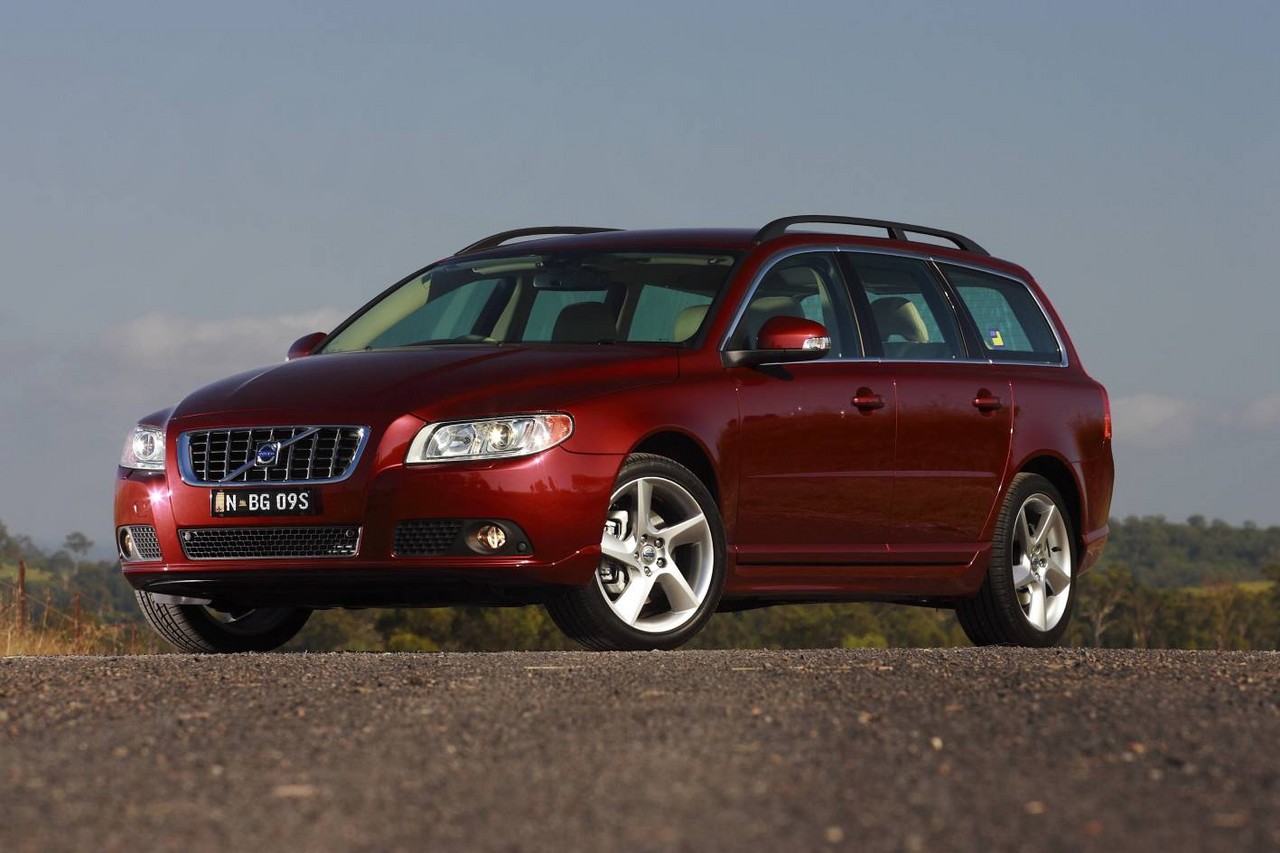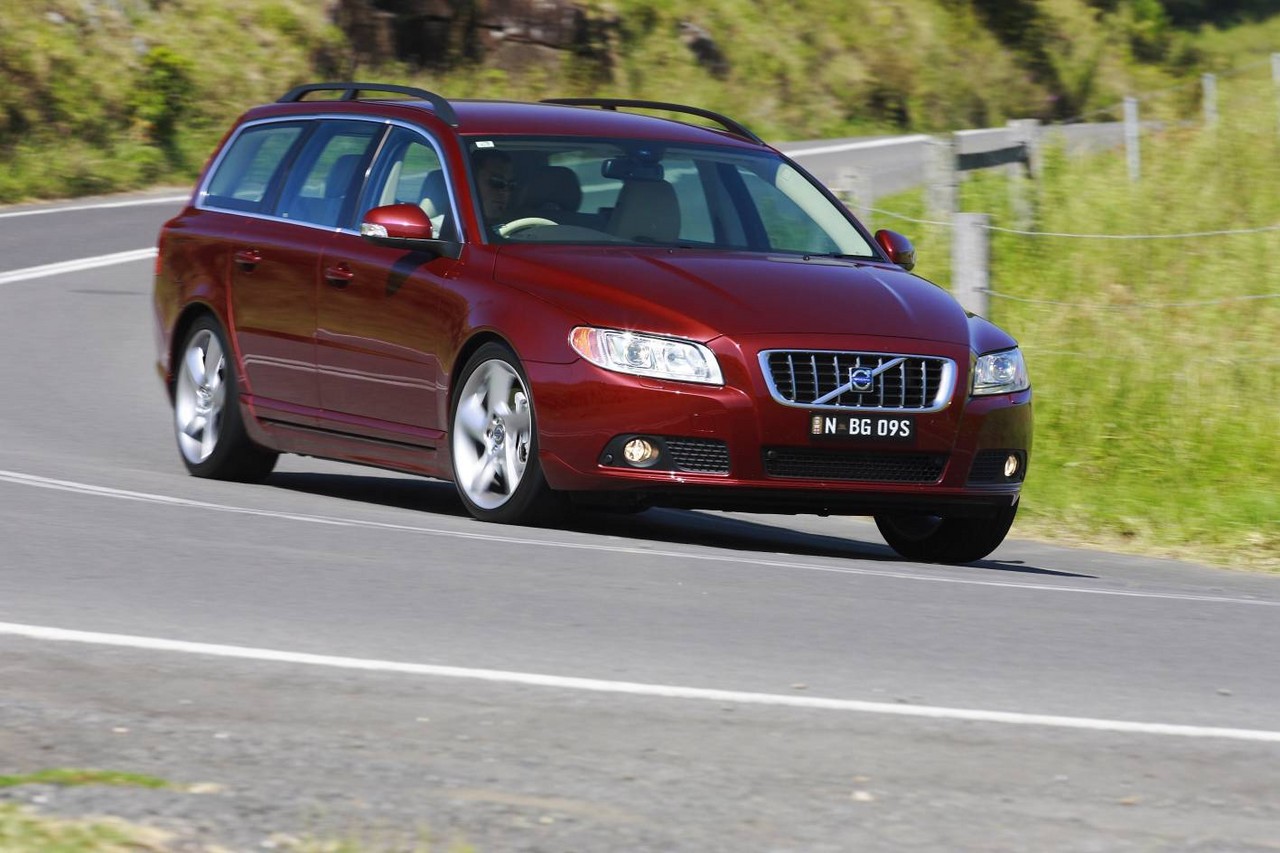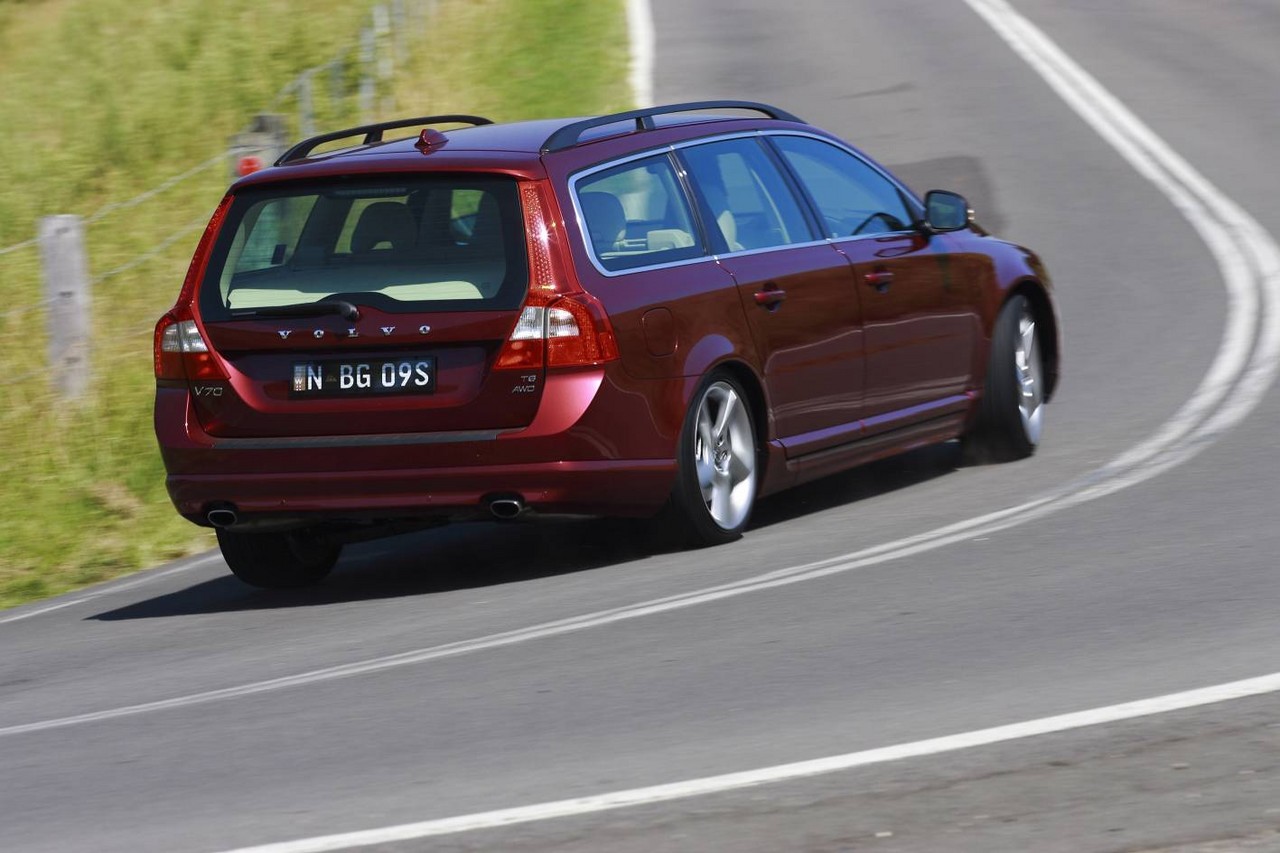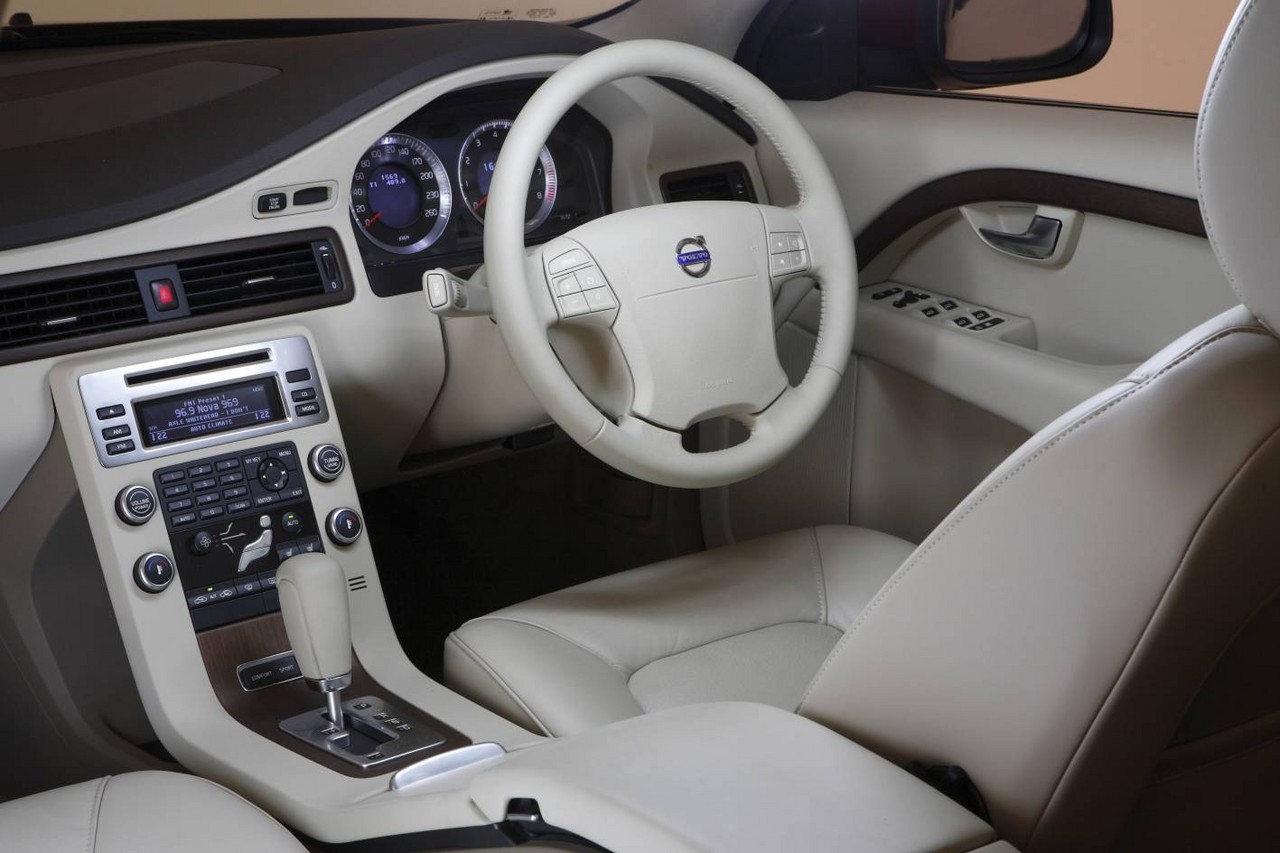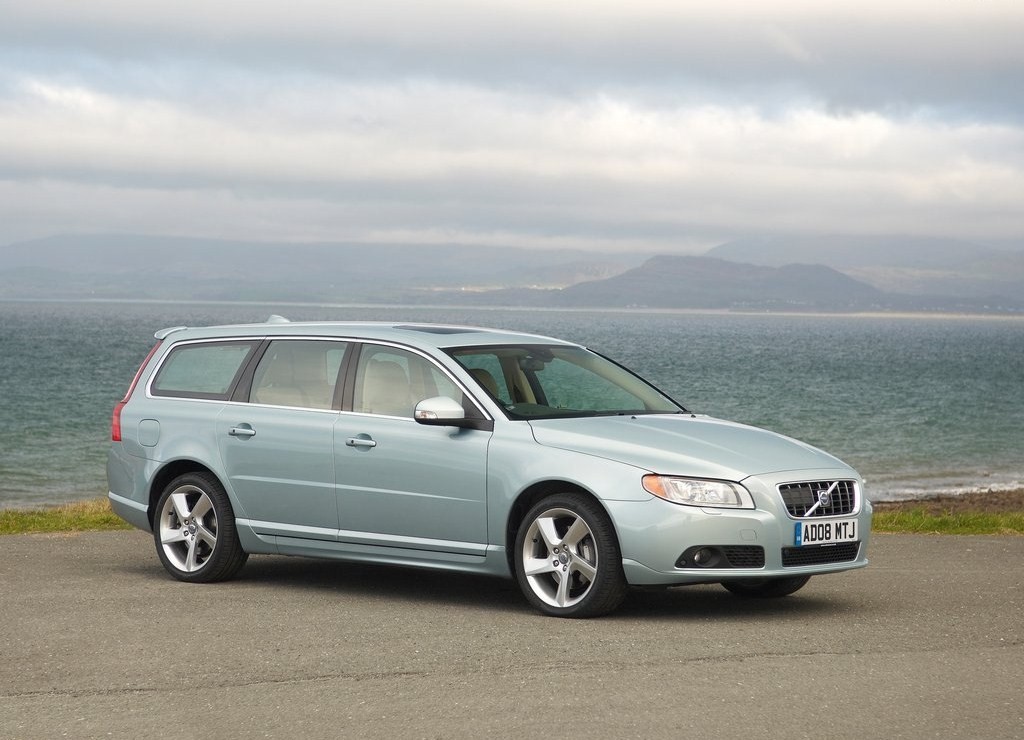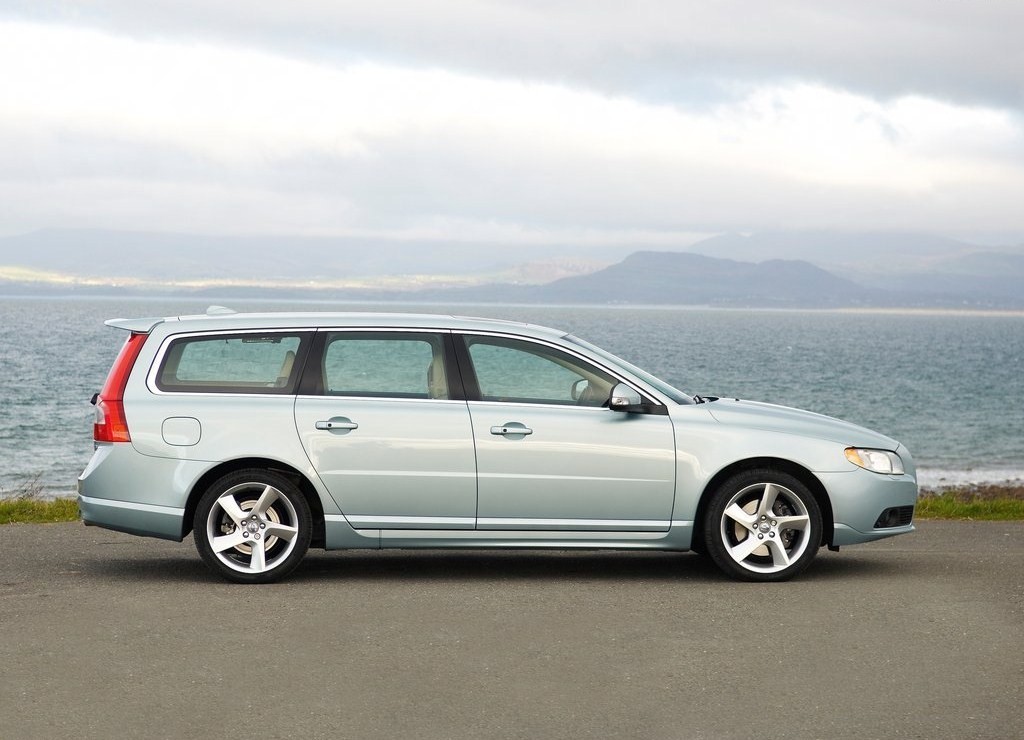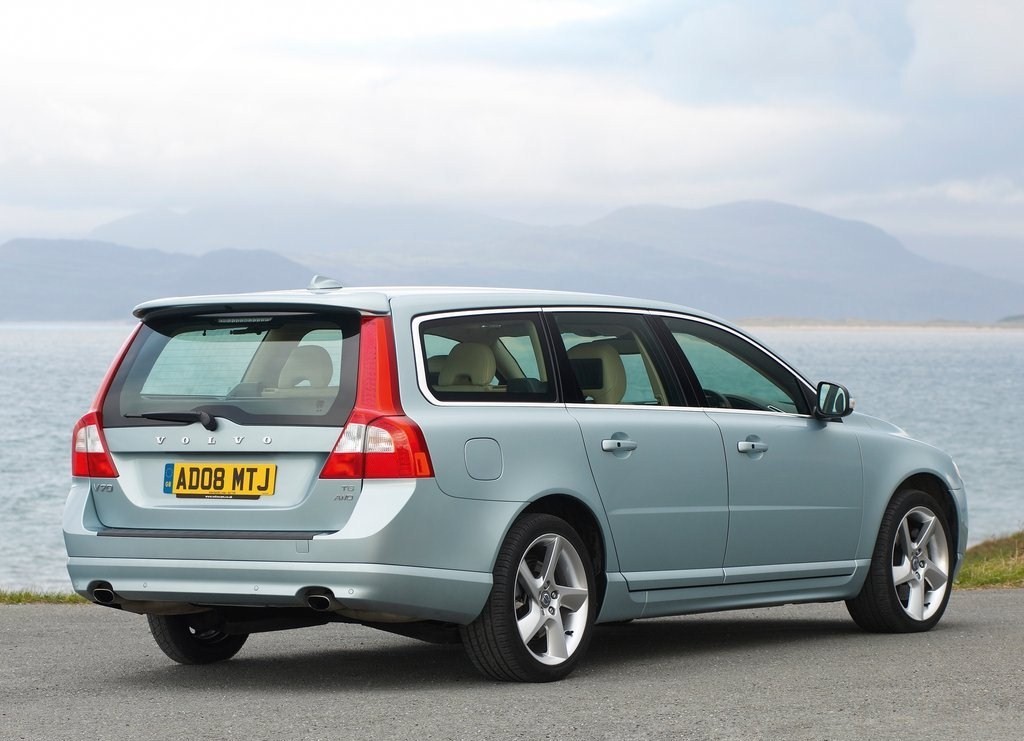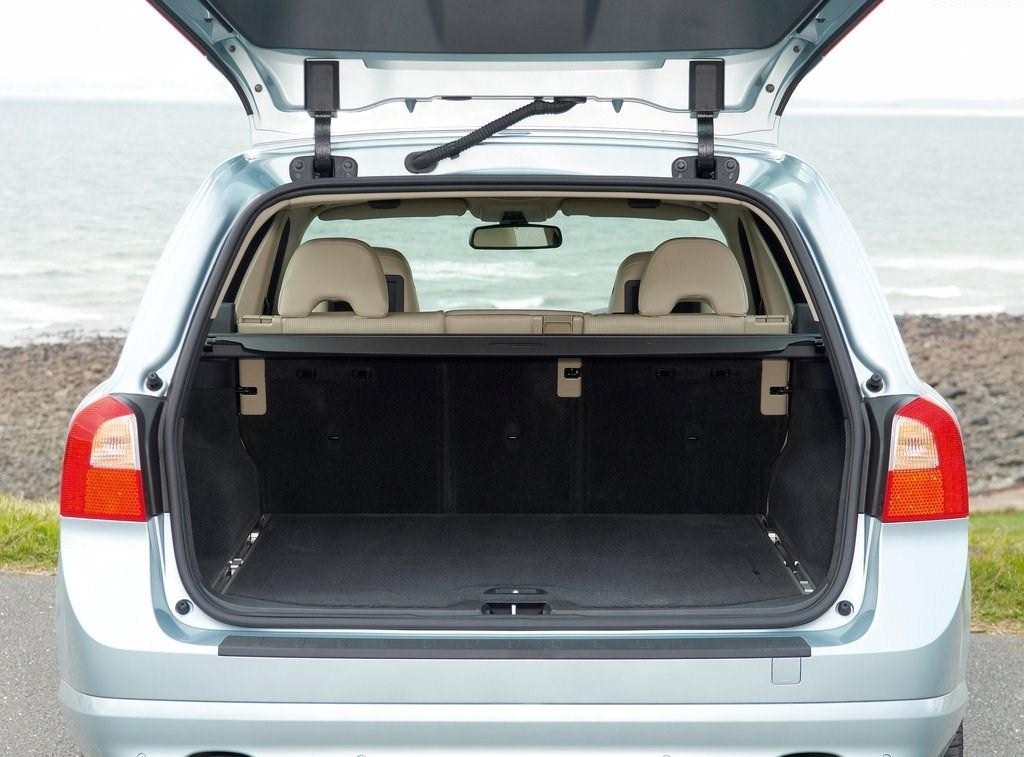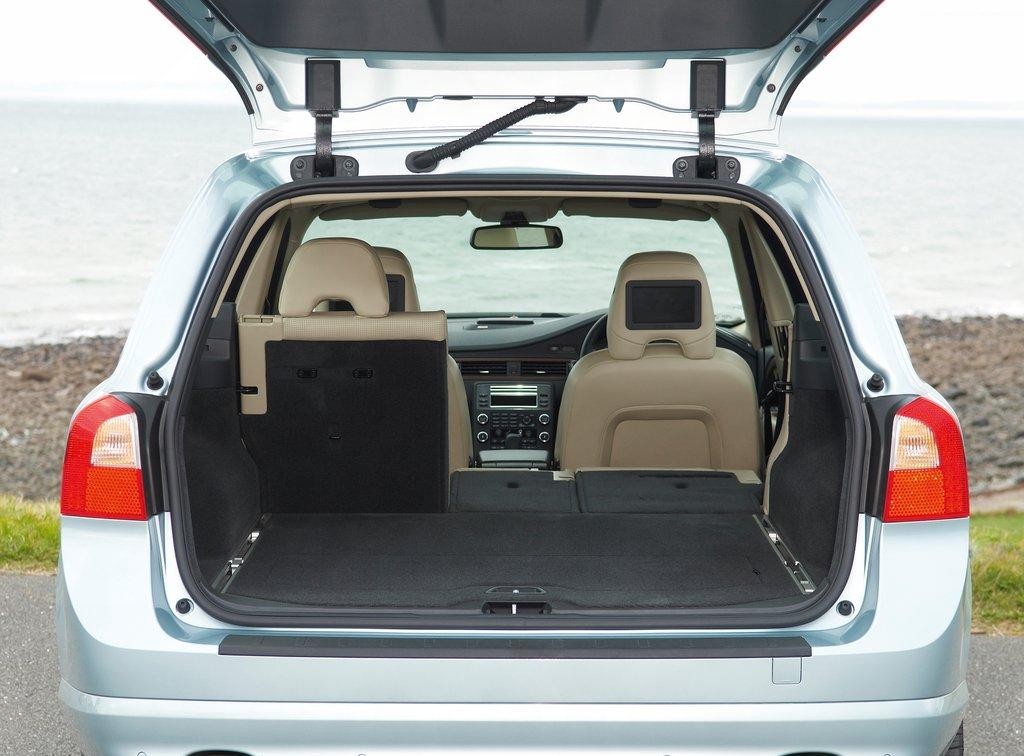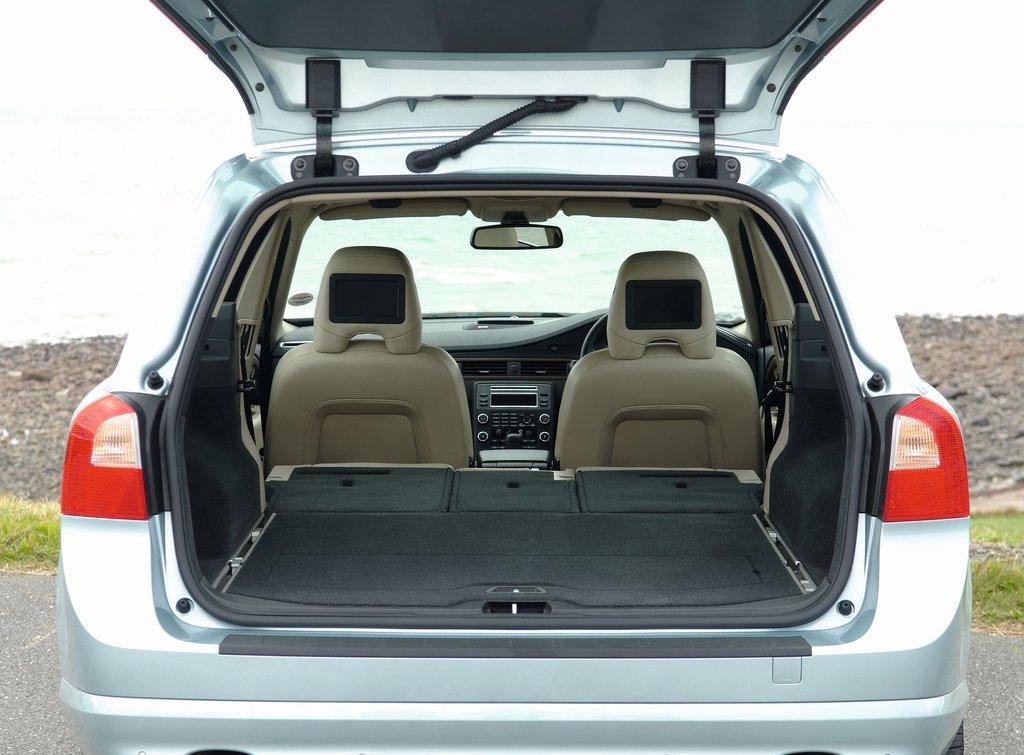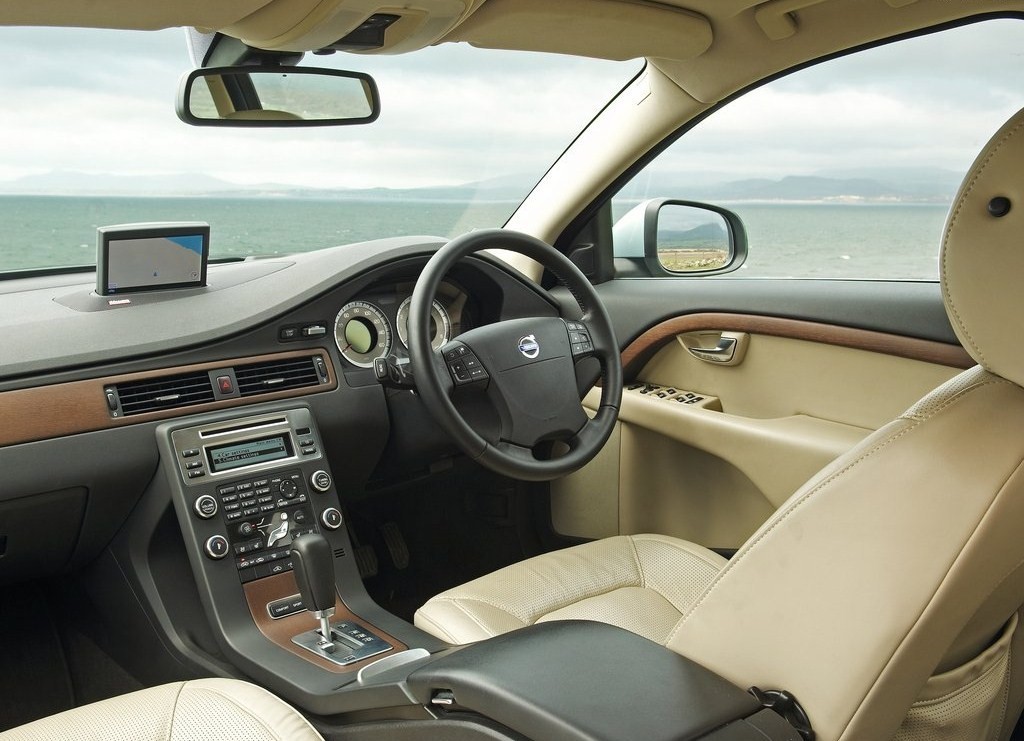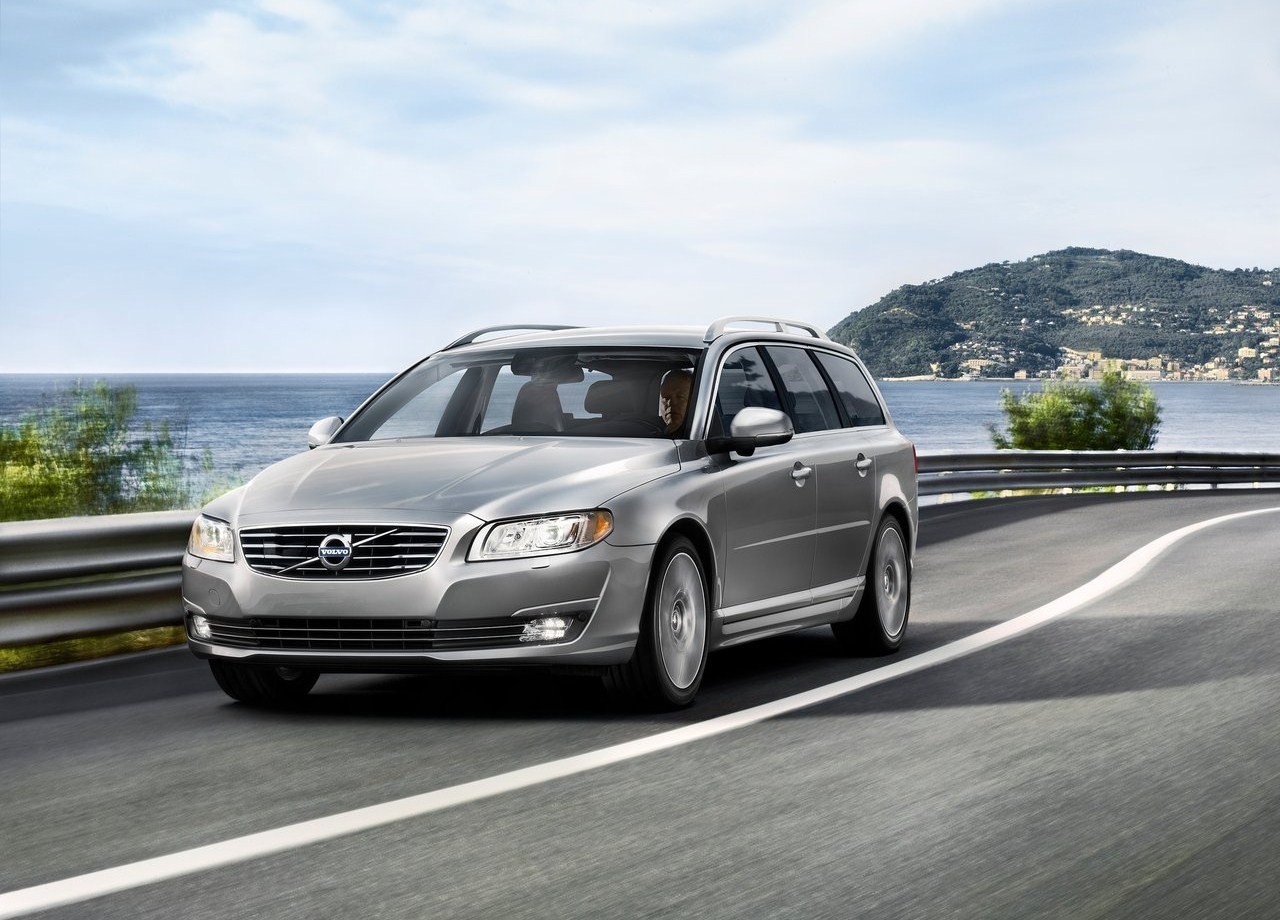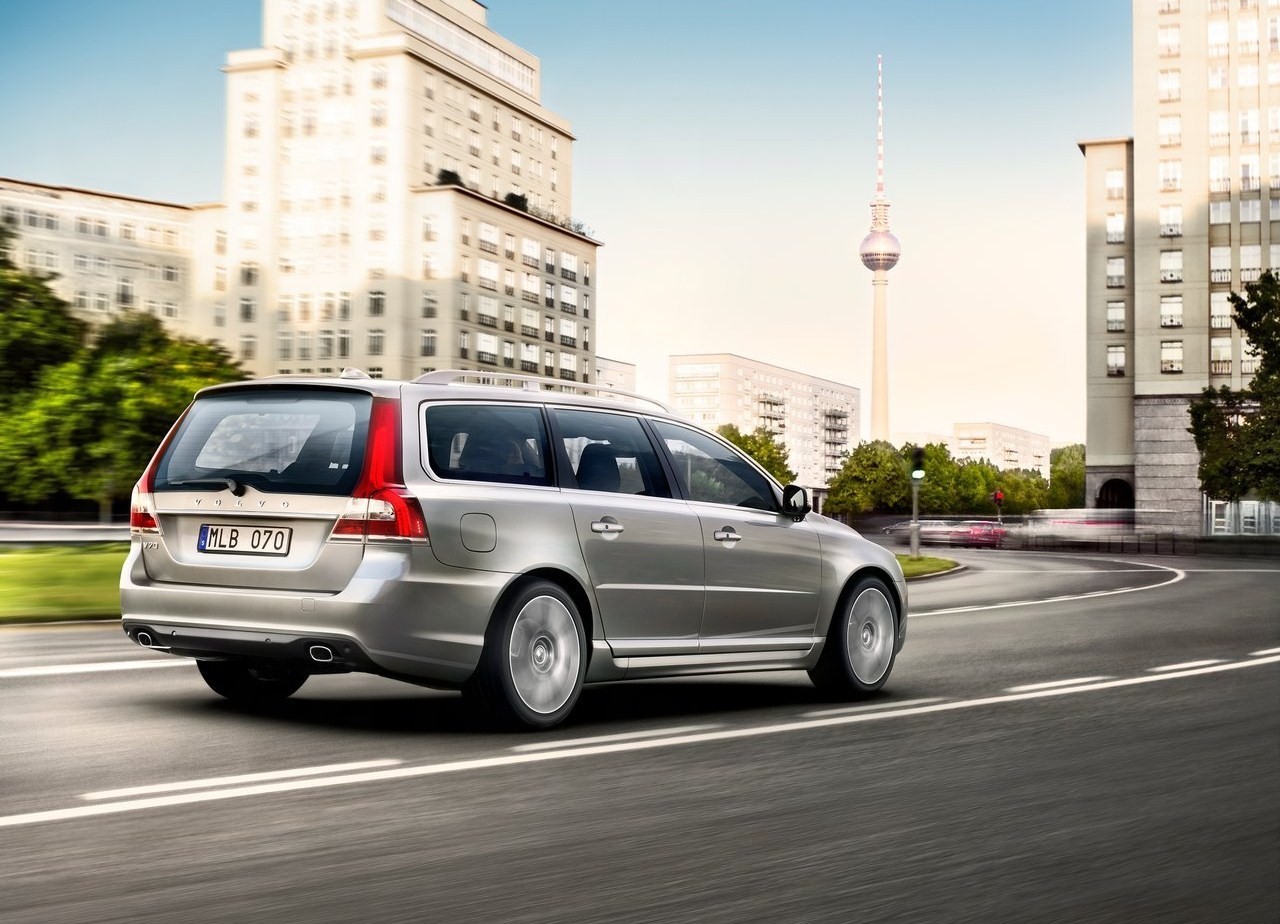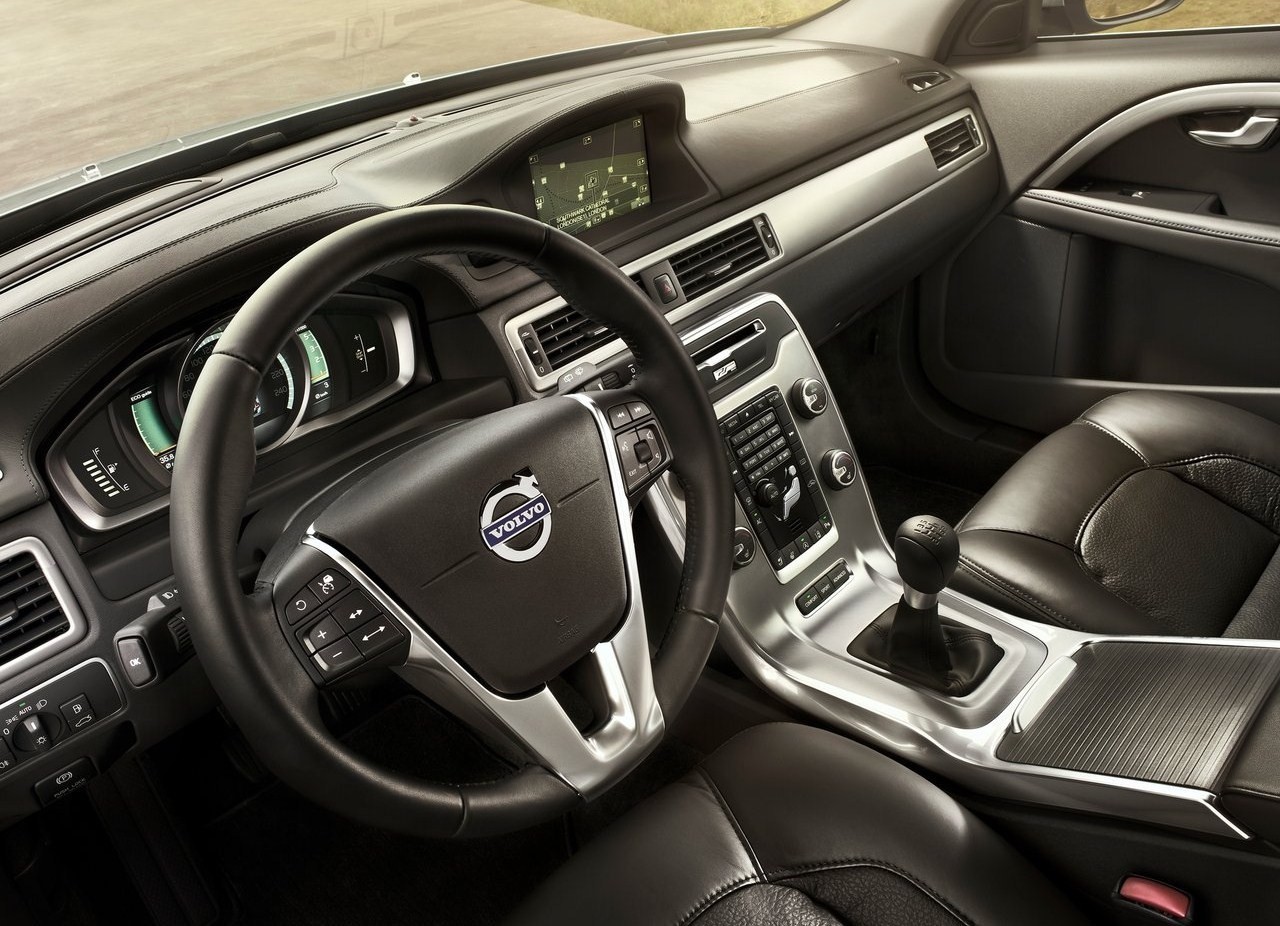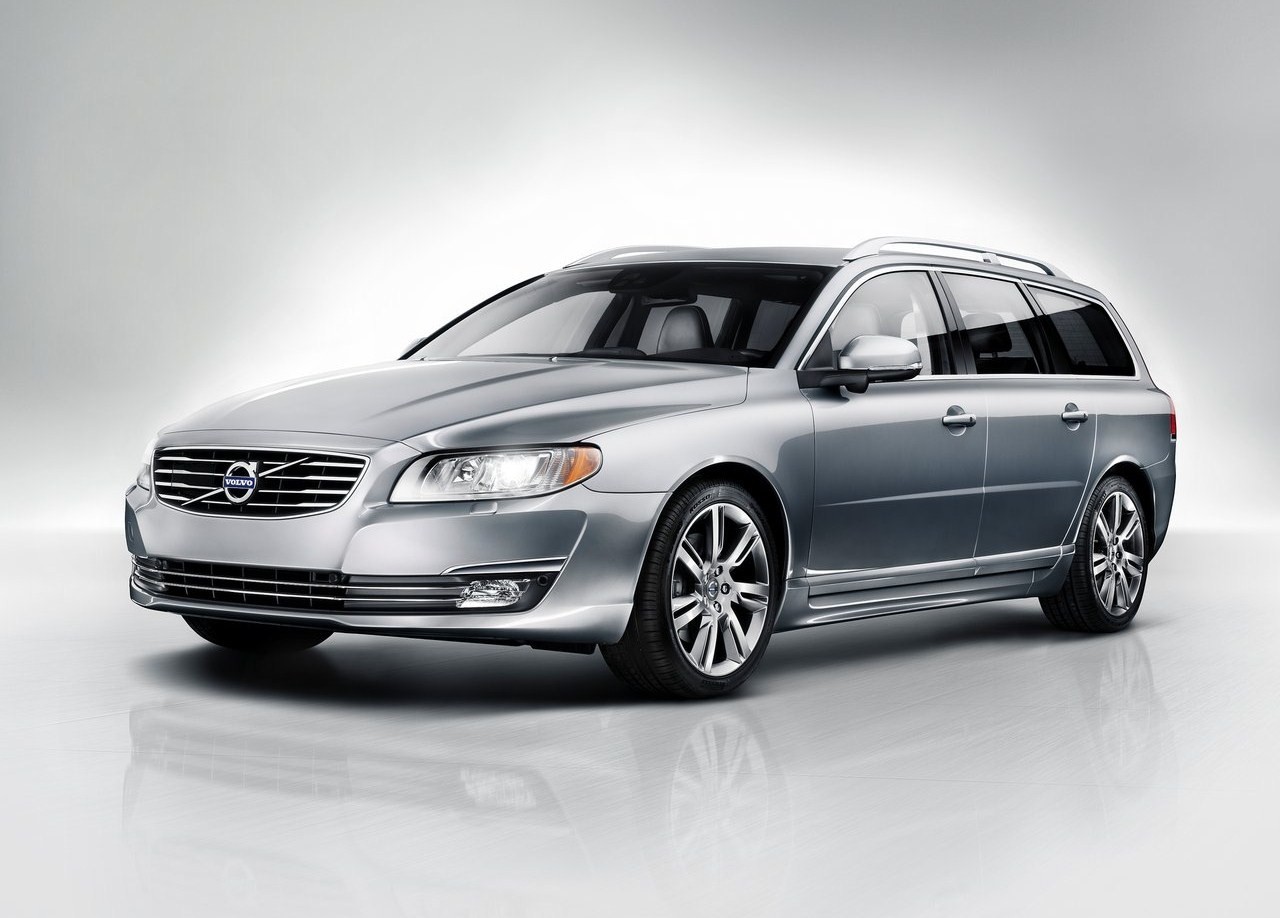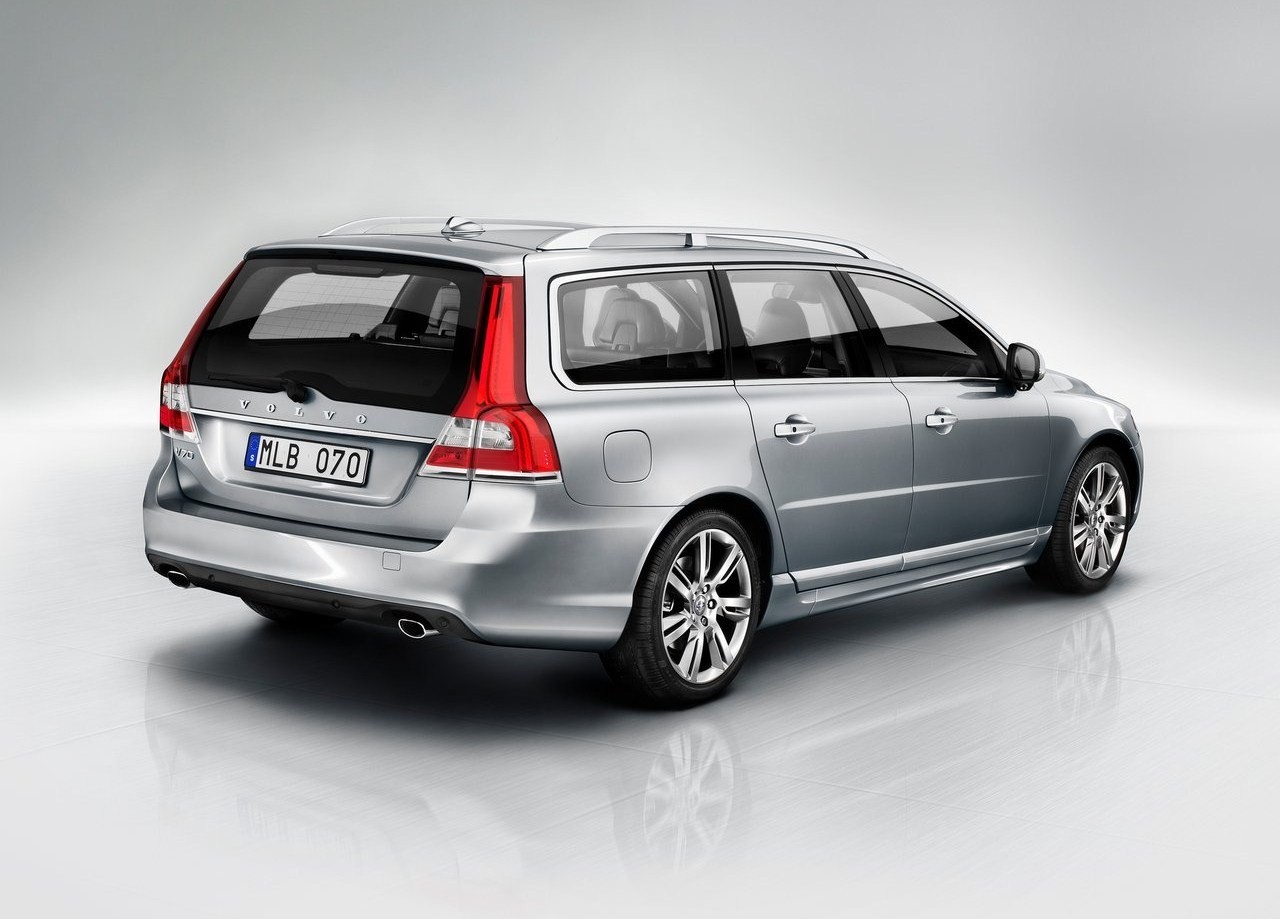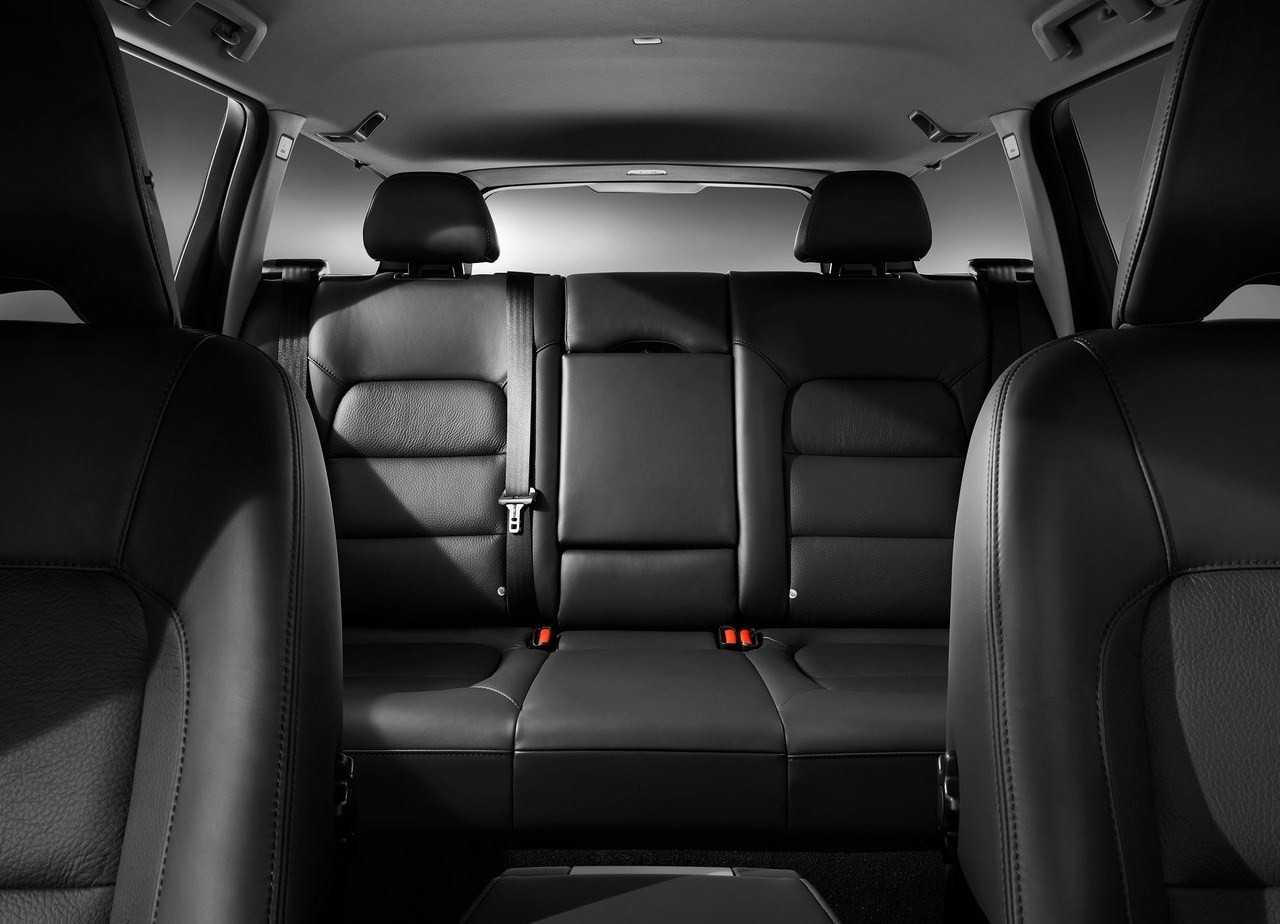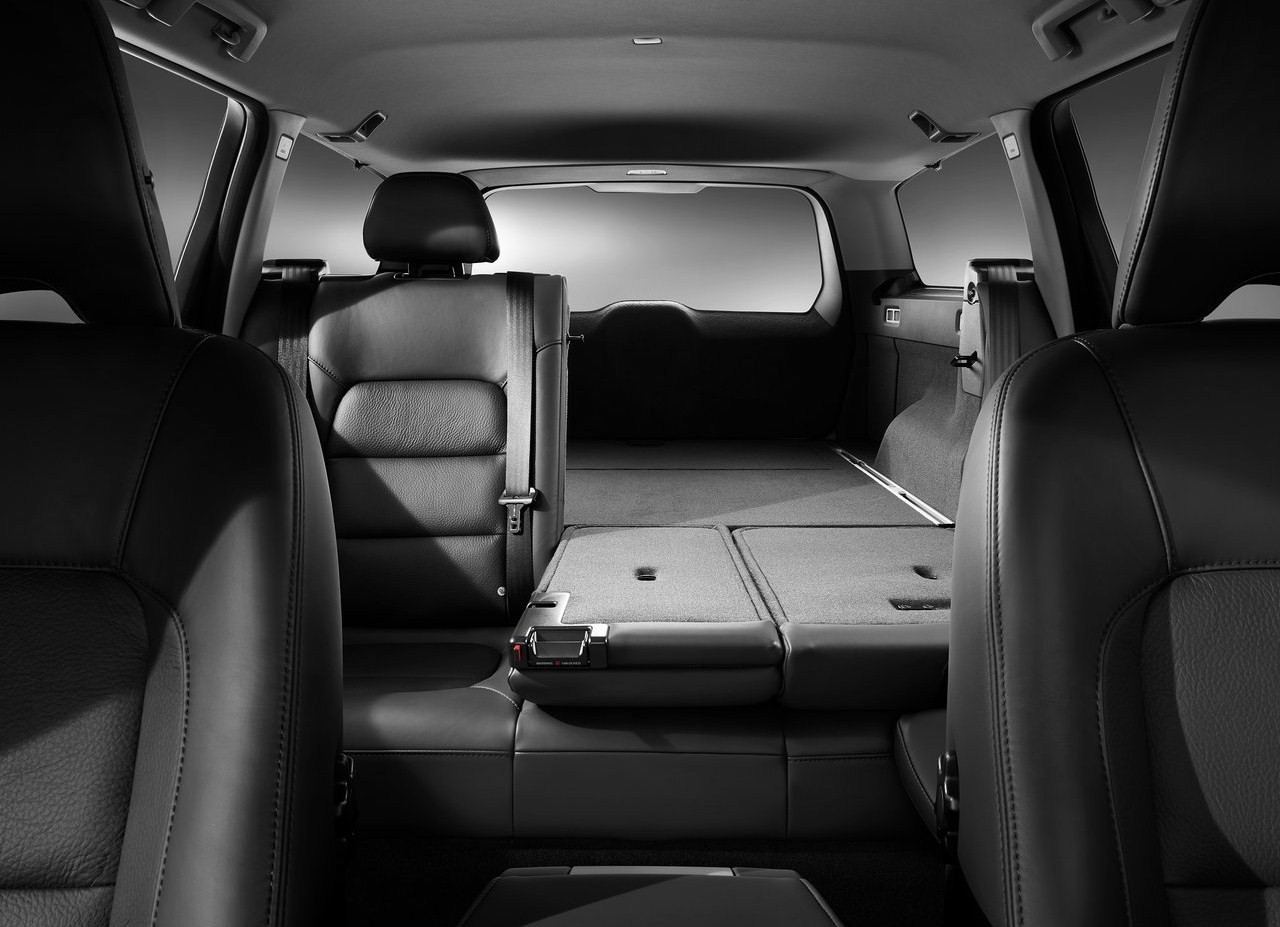
- Willing 3.0-litre turbocharged petrol engine
- Spacious interior
- Large and versatile cargo area
- Quiet, well-insulated cabin
- In ‘Comfort’ mode, adaptive suspension provide a comfortable ride
- Front seats lack support (and leather seats are slippery)
- Fuel consumption for 3.0-litre turbo petrol engine
- Oil consumption for 2008-11 Volvo V70 T6
Review: Volvo Mk.3-I V70 (2008-10)
Overview
Released in April 2008, the Volvo Mk.3 Phase I (Mk.3-I) V70 was a five-seat, all-wheel drive wagon. Manufactured in Torslanda, Sweden, the Volvo V70 was powered by a 3.0-litre turbocharged inline six cylinder petrol engine that was mated to a six-speed automatic transmission with a sequential shift function.
B6304T2 engine
The 3.0-litre B6304T2 inline six cylinder engine had aluminium-alloy construction, a twin-scroll turbocharger, double overhead camshafts, Variable Cam Timing (VCT) for both intake and exhaust valves, Cam Profile Switching (CPS) for variable valve lift, four valves per cylinder, a Variable Intake System (VIS) with two throttle flap valves and a compression ratio of 9.3:1.
| Variant | Engine | Trans. | Peak power | Peak torque |
|---|---|---|---|---|
| T6 AWD | 2953 cc B6304T2 turbo petrol I6 | 6sp auto | 210 kW at 5000 rpm | 400 Nm from 1500-4800 rpm |
AWD system
The Volvo V70 was fitted with a Haldex all-wheel drive system with a multi-plate clutch. In normal conditions, the system provided a 95:5 front:rear torque split. The clutch was also be pre-tensioned such that torque could be directed to the rear wheels when sensors detected that it was required, i.e. before wheel slip actually occurred. When the coupling’s clutch plates were engaged, up to 50 per cent of the engine’s torque could be directed to the rear wheels.
Dimensions and body
Compared to the Volvo Mk.2 V70 , the Mk.3 V70 was 113 mm longer (at 4823 mm), 86 mm wider (1890 mm), 169 mm taller (1540 mm) and had a 61 mm longer wheelbase (2816 mm). Furthermore, the body achieved a 15 per cent increase in torsional rigidity, partly due to the increased use of high-strength steel.
Suspension and stering
The Volvo Mk.3 V70 had MacPherson strut front suspension and independent, multi-link rear suspension. The suspension, however, included Volvo’s ‘Four-C’ active chassis system which used inputs from sensors to vary damping resistance according to conditions; the driver could also select from Comfort, Sport and Advanced settings.
The Volvo V70 had rack-and-pinion steering with hydraulic power assistance.
Safety equipment
Standard safety equipment for the Volvo V70 included dual front airbags (with two-stage inflation), front side airbags, full-length curtain airbags (i.e. for front and rear occupants), ABS, electronic brake force distribution, brake assist, electronic stability control, traction control, active front seat head restraints, anti-submarining seats, front and outer rear seatbelt pretensioners and front seatbelt load limiters. The V70 was also fitted with a height-adjustable integrated rear child booster seat.
An optional radar-based cruise control system and collision warning system was also offered. Utilising a radar and camera, the cruise control system could maintain a set distance from the car in front, while the collision warning system would warn the driver of an imminent collision and autonomously brake the vehicle if a collision was determined to be inevitable.
Euro NCAP testing
In Euro NCAP testing , a Volvo V70 fitted with a 2.4-litre turbo-diesel engine received a five star adult occupant protection rating with a score of 34.2 out of 37. There was a slight risk of serious chest and leg injury for the driver in the frontal offset test and maximum points were awarded in the side impact test. In the pole test, the side airbags fired late and prevented the curtain airbags from fully deploying – Volvo subsequently developed a fix for this problem, applying it existing and new vehicles. However, the same problem occurred when the V70 was re-tested as the airbag failed to deploy correctly.
Whiplash tests were subsequently conducted to assess the V70 under Euro NCAP’s updated methodology , in which the V70 received a five star safety rating which included an 88 per cent adult occupant protection rating and an 84 per cent child occupant protection rating.
Features
Standard features for the Volvo V70 included 18-inch alloy wheels with Ohlins active suspension (with selectable ‘Comfort’, ‘Sport’ and ‘Advanced’ settings), a twelve Dynaudio speaker sound system with a six-disc in-dash CD player, MP3/WMA-compatibility and auxiliary input, leather seats, a power adjustable driver’s seat, heated front seats, dual zone climate control air conditioning, cruise control, bi-xenon headlights with washers, front fog lights, front and rear parking sensors, rain-sensing wipers, 40/20/40 split and folding rear seats, remote central locking, power mirrors and windows, a tilt and reach adjustable steering wheel, automatic park brake, 12 volt power outlet, a self-opening tailgate, trip computer, an alarm and immobiliser.
V70 R-Design edition
In November 2009, an R-Design edition was released; compared to the standard V70, the R-Design edition added 18-inch ‘Cratus’ alloy wheels, sports-tuned suspension (with higher-rated anti-roll bars and bushings), two-tone leather seats, contoured sports seats, a leather-wrapped steering wheel and aluminium interior highlights. Visually, the R-Design edition could be identified by its matte satin finish grille and exterior mirrors, body-coloured rear spoiler and 90 mm chrome exhaust pipes.
Related links
- Press Kit: Volvo Mk.3-I V70 (March 2008)
- Specifications: Volvo Mk.3-I V70 (September 2009)
- Volvo Newsroom: The all-new V70 – more luxurious, sportier and versatile (February 2007)
- Volvo Newsroom: Volvo V70 – model year 2008 (July 2007)
- Volvo Newsroom: The new Volvo V70 R-Design (May 2008)
- Volvo Newsroom: Volvo V70 – model year 2009 (May 2008)
- Volvo Newsroom: Volvo V70 – model year 2010 (February 2010)
Review: Volvo Mk.3-II V70 (2010-13)
Overview
Released in September 2010, the Volvo Mk.3 Phase II (Mk.3-II) V70 introduced an upgraded engine, greater fuel efficiency, occupant protection and interior updates. The 3.0-litre turbocharged inline six cylinder engine featured friction-reduction techniques and upgraded spark plugs, while fuel efficiency was improved through the introduction of electric power steering, regenerative braking, revised transmission program and modifications to the water pump and air conditioning compressor. Inside, there was a new steering wheel and gearshift knob, ‘watch dial’ instrumentation and stitching on the door and centre armrests.
| Variant | Engine | Trans. | Peak power | Peak torque |
|---|---|---|---|---|
| T6 AWD | 2953 cc B6304T4 turbo petrol I6 | 6sp auto | 224 kW at 5600 rpm | 440 Nm at 2100-4200 rpm |
Safety equipment
Compared to its Mk.3-I predecessor, side impact protection was improved by strengthening the body between the A- and B-pillars, while the curtain airbags were recalibrated for greater sensitivity during front and rear-quarter collisions. The rear head restraints were also revised and repositioned.
Furthermore, the emergency braking lights would automatically strobe in emergency braking situations, while the hazard lights would then be activated once the vehicle had decelerated to a speed of less than 10km/h.
Features
Standard features for the Volvo Mk.3-II V70 were extended to include auxiliary a USB/iPod input and Bluetooth connectivity. The V70 was also fitted with 20 mm lower ‘dynamic chassis’ suspension as standard.
2012 V70 Ocean Race edition
In March 2012, limited-run Ocean Race editions of the D5 variant were released. The Ocean Race editions could be identified by their 18-inch ‘Argus’ alloy wheels and choice of ‘Ocean Race Blue II’ or ‘Electric Silver’ metallic paint finishes. Inside, there was cross-stitched leather upholstery with ‘Ocean Race’ embossing and aluminium inlays for the centre stack.
Related links
- Technical Specifications: Volvo Mk.3-II V70 (July 2010)
- Volvo Newsroom: Volvo V70 – model year 2011 (August 2010)
- Volvo Newsroom: Volvo V70 – model year 2012 (May 2011)
- Volvo Newsroom: Volvo V70 – model year 2013 (August 2012)
- Wikipedia.org: Volvo Mk.3 V70
